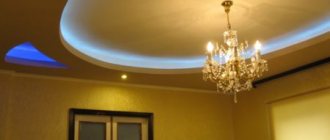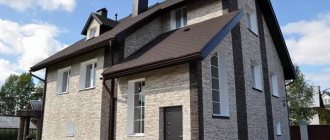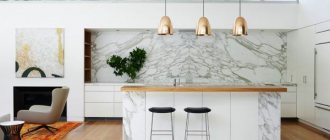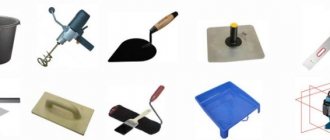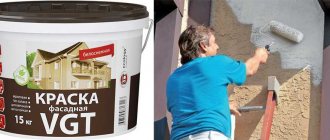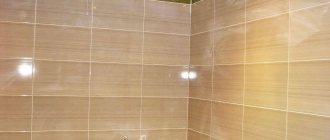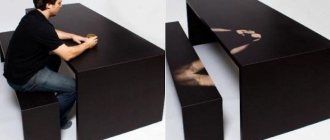What is fiberglass?
The material is a canvas used for painting or putty. It is made from fiberglass threads, which are pressed during the production process. Fiberglass has the appearance of a mesh. It is also called differently the cobweb.
Fiberglass and glass wallpaper are considered environmentally friendly; they protect the wall from the appearance of fungi and mold.
The material protects surfaces from cracks.
The product is presented on the market in the form of rolls, the width of which is 1 m, and the length can be 20 or 50 m. The density of the structure ranges between 20 - 60 g/m2.
Fiberglass has two sides that differ from each other. The back has fibers that increase the adhesion of the material to the surface. The front side is smooth, which makes it easy to carry out painting work.
Even if the sides of the fiberglass are mixed up and used for other purposes, there will not be much difference in the finishing.
Fiberglass can be with simple and complex weaving. The first type is used to prepare the surface for plastering, the second - for painting.
Advantages
Fiberglass wallpaper is considered environmentally friendly, since synthetic raw materials are not used in its production. Their advantages also include the following:
- Moisture resistance - due to their structure they do not absorb moisture.
- Fire resistance - the material does not burn.
- Strength - the tensile strength of glass wallpaper is several times better than that of a simple vinyl sheet.
- Durability – service life reaches 25 years.
- Practicality - installation will not cause any difficulties.
Fiberglass protects walls from the formation of fungi and mold. It can be painted more than once. The integrity of its structure is not compromised by such influences. The cost of fiberglass is optimal, which further increases its popularity.
The scope of application of the material is quite extensive. It is effectively used in finishing rooms with high air humidity and low temperature conditions.
Installation methods
Fiberglass or glass wallpaper are rolled materials. Their installation is carried out only using adhesive solutions. You can also use simple glue for non-woven or vinyl wallpaper.
The choice of product directly depends on the quality characteristics of the surface being coated.
Fiberglass is glued to drywall using an adhesive solution, as well as non-woven and vinyl wallpaper.
If you need to install fiberglass on plasterboard walls, it is better to use specialized products. They will help securely secure the material.
Pasting walls on plasterboard: instructions
Gluing fiberglass to a plasterboard surface is quite simple; you don’t need to be a big specialist to do it. But still some steps must be followed. We offer step-by-step instructions on how to correctly and quickly glue glass wallpaper onto a plasterboard sheet:
- The surface of the gypsum board sheets is covered with a layer of putty; special attention must be paid to the joints. All irregularities must be repaired flush with the main surface. It is desirable that the layer of putty completely covers the entire sheet. The layer should not only be even, but also relatively thin; after application, it must be left to dry (the time depends on the type of mixture and the thickness of the layer.
- In order for the fiberglass to lay smoothly and beautifully, it is recommended to glue all joints with serpyanka. The same applies to small cracks and fastening points that become invisible against the background of the rest of the slab. Serpyanka is a tape with a small width, made of fiberglass; its structure is similar to a regular medical bandage, only in this case it is also impregnated with an adhesive special substance.
- Next, the surface of the drywall is treated with sandpaper so that there are no irregularities left on the wall. This will make the gluing process simpler, faster and of higher quality.
- The next step is to coat the gypsum board with a primer so that the wallpaper glue does not soak into the wall. If this is not done, the fiberglass will very quickly begin to lag behind the plasterboard surface. To be safe, many experts recommend applying two layers of primer, but the first must be completely dry before applying the second; in this case, drywall holds the wallpaper better.
Gluing and painting glass wallpaper.
The fiberglass begins to stick only after the wall has completely dried. To correctly determine the amount of material, before starting all work, the wall is measured; for this, the length from floor to ceiling is taken and multiplied by the number of walls. There is no need to subtract openings!
Don't forget about the cut-in percentage, which is about 10%. Fiberglass is glued to wallpaper glue, which today can be bought in the form of a dry mixture diluted with ordinary water. The gluing technology itself is no different from other types of wallpaper; the glue is left to swell, and the sheets of glass wallpaper are rolled out on a flat and clean surface (for this, clear a section of the floor in the room where the work is being done).
Using a brush or roller, the finished adhesive composition is applied to the underside of the material, after which the glass wallpaper is glued to the drywall.
To properly glue fiberglass to a plasterboard wall, you need to prepare the following tools and materials:
- glass wallpaper in the calculated quantity (how to calculate the material is indicated above);
- tape measure, simple pencil and scissors;
- wallpaper glue;
- container for diluting glue, brush or roller;
- clean rag;
- dry roller or rag for smoothing wallpaper.
Related article: Do-it-yourself ceiling beams: wooden, polyurethane, plasterboard
Preparing drywall for installation of glass wallpaper
The work process will not cause any difficulties. It is necessary to clean the surface of the gypsum board from dust and other deposits.
Drywall in the bathroom: you can if you know how
After this, the surface is plastered. It is necessary to properly process the joints of the material using a special sickle tape. All surface defects are covered with putty. And after it dries, sand it with sandpaper.
To ensure normal adhesion of fiberglass and drywall, the entire rough surface must be treated with putty.
After this, layers of primer are applied. They should dry well and saturate the plasterboard. If there is old finish on the surface, it must be removed. Then perform plastering, puttying, sanding and priming.
Technology for gluing fiberglass to drywall
To carry out the work you will need a number of the following tools:
- fiberglass;
- putty knife;
- roller, paint brush;
- container for preparing the mixture;
- tape measure, pencil;
- scissors, knife;
- adhesive composition.
Before you start gluing fiberglass onto drywall, you should wear protective gloves, which will prevent small particles of the material from getting on your skin, which can cause itching and irritation.
The process itself is carried out in the following sequence:
- If there are irregularities on the surface to be treated and they have not been repaired before, now they should be eliminated using putty.
- Applying primer. For greater efficiency, after it dries, you can re-open it.
- The next step is to prepare the adhesive mixture using the instructions on the package.
- After this, you need to roll out the fiberglass and cut strips of the required length.
- Next, you need to apply the adhesive mixture to the material, as well as to the surface to be glued using a roller.
- You need to wait a short period of time for the wall or ceiling and the cut strips to become saturated with glue.
- Then you can begin gluing the surfaces with prepared fiberglass blanks, leaving 2-3 mm gaps for the putty. They can also be glued overlapping, but in this case the seams will be noticeable.
- Puttying and cleaning of seams should be carried out only after the glue has completely dried.
If necessary, after completing all of the above steps, you can color the material.
As a result, if you strictly follow each of the above steps during the work yourself, you should get a smooth and high-quality pasted surface.
Types of installation
There are two ways to glue the material: joint to joint or overlap. Their choice directly depends on the light source in the room. It is necessary to immediately assess the situation and determine what will be less noticeable: the joints or seams of the fiberglass strips.
The glass sheet must be glued to the plasterboard surface, joint to joint.
This is due to the fact that the rough surface made of HA perfectly absorbs moisture. After impregnating the fiberglass with glue, its structure will begin to swell. In some places there may be excess material that needs to be trimmed. It is better to avoid such modifications, as the structure of the canvas is disrupted. This will lead to loss of technical characteristics of the material.
How is fiberglass glued?
In order to glue fiberglass to a plasterboard surface, you can use wallpaper glue, but it is best to buy compounds designed specifically for glass wallpaper. Why is this so? The fact is that many dry mixtures contain starch, and it does not hold glass wallpaper very well, so you should choose a mixture in such a way that it contains PVA, but in a diluted state.
In some cases, craftsmen recommend using putty, but this is fraught with such troubles as cobwebs from material assemblies and air bubbles. Even very liquid putty does not saturate the fiberglass to the base, so it will quickly begin to peel off. During the installation process itself, the canvas will have to be moistened with water, and this can have a bad effect on both wallpaper and drywall.
When choosing an adhesive, pay attention to the composition and purpose of the adhesive. It is better to immediately overpay a small amount and take more expensive glue than to completely replace the fiberglass with a new one.
Preparing walls for fiberglass
Installing drywall sheets on the frame.
Before gluing glass wallpaper onto drywall, the wall must be prepared. The old coating should be completely removed, the wall should be cleared of debris, and leveling work should be carried out if the plasterboard under the glass wallpaper will be installed using a frameless method. After laying the gypsum board, it is necessary to thoroughly putty the surface, since fiberglass requires a perfectly flat wall; it is best to apply a layer of putty over the entire sheet so that the seams do not show through after sticking.
Before gluing wallpaper, it is recommended to apply two layers of primer after the putty has dried. This is done to ensure that the glass wallpaper does not peel off during operation.
It is important to properly prepare the working conditions; glass wallpaper can only be glued in a room with a temperature of +10-25°C, all windows must be tightly closed. When gluing and drying, glass wallpaper does not like drafts and direct sunlight.
Related article: Building a balcony on the first floor: how to do it right
Tools for installing fiberglass
You can carry out work on gluing the surface of the HA yourself. To do this you will need the following tools:
- roulette;
- rollers and brush;
- pencil;
- scissors;
- container for mixing the adhesive solution.
You will also need a rag to remove excess glue from the surface of the material.
One roller is used to apply the solution to glass wallpaper and the wall, the second is used to smooth the material on the surface. It must remain dry.
Work process
The first step in installing glass fiber will be preparing the adhesive solution. If it is presented in the form of a concentrate, you must add a certain amount of liquid to it (indicated on the product packaging). Ready-made mixtures are much more effective and practical.
Next, rolls of fiberglass are prepared. Pre-measure the height of the room. Strips of material are cut according to this parameter. It is worth considering that the ceiling height in the room may fluctuate slightly. It is for this reason that it is better to cut the rolls after applying them to the wall surface.
When choosing an adhesive for installing fiberglass, it is better to give preference to ready-made mixtures; they are more effective.
Glue is applied to the surface of the glass fiber and the back side of the fiberglass. The product should be absorbed into the structure of glass wallpaper and drywall.
Some repairmen advise not to spare the adhesive solution when applying. This should not be done, since HA will absorb excess moisture. Bubbles will appear on its surface, which will negatively affect the quality of finishing work.
The impregnated fiberglass is then applied to the wall and pressed tightly. It is necessary to smooth it with a rag and a dry roller. It is better to start the gluing process from the top of the wall, gradually lowering.
It is necessary to glue the material onto the GC with small gaps between the strips - 2 - 3 mm. This is due to the fact that the structure of the fabric has the ability to expand when exposed to moisture. Once the adhesive solution dries, these gaps will not be visible. The fiberglass will be distributed evenly over the drywall.
It is necessary to take into account that the room must have an optimal temperature when carrying out work. Drafts must be avoided, as they can cause the glass sheet to move away from the wall over time.
What is fiberglass?
Fiberglass is an innovative material that is designed for gluing various surfaces, allowing you to hide small defects in the primary coating on ceilings and walls.
Note! Experts advise gluing fiberglass onto a well-leveled base, so plasterboard, which has a smooth and even surface, is an ideal solution for this task.
For this reason, after applying the putty, it is only necessary to grout the remaining irregularities, thanks to which it will be possible to carry out further gluing of the material as efficiently as possible.
In structure, it resembles fabric that has been treated with fiberglass. Thanks to this, the material has a higher level of safety and other higher performance indicators compared to synthetic analogues.
Painting fiberglass consists of thin fibers glued together in a chaotic manner. This fabric is strong and pleasant to the touch. There are no patterns on its surface, but in appearance it resembles a spider's web.
Note! Fiberglass can have different densities and thicknesses. The thicker the canvas, the more it weighs and has higher strength.

